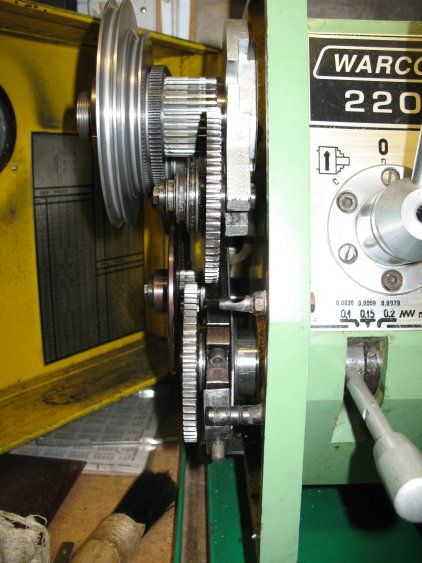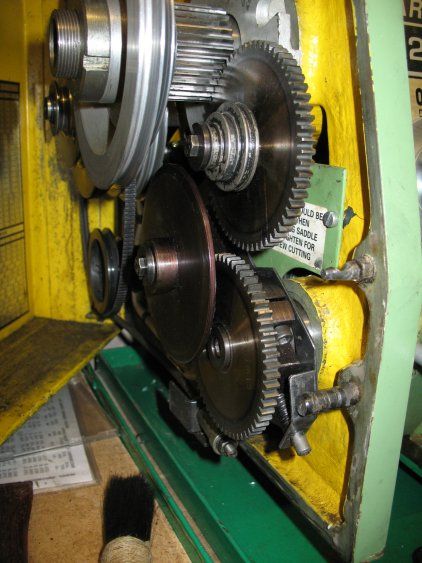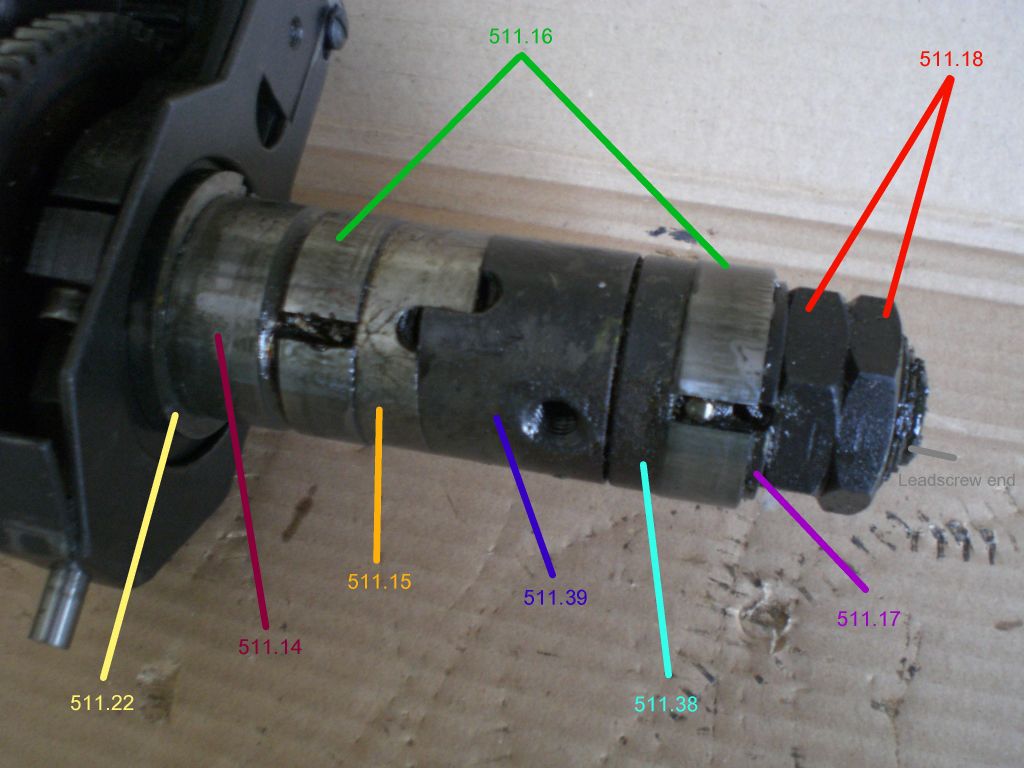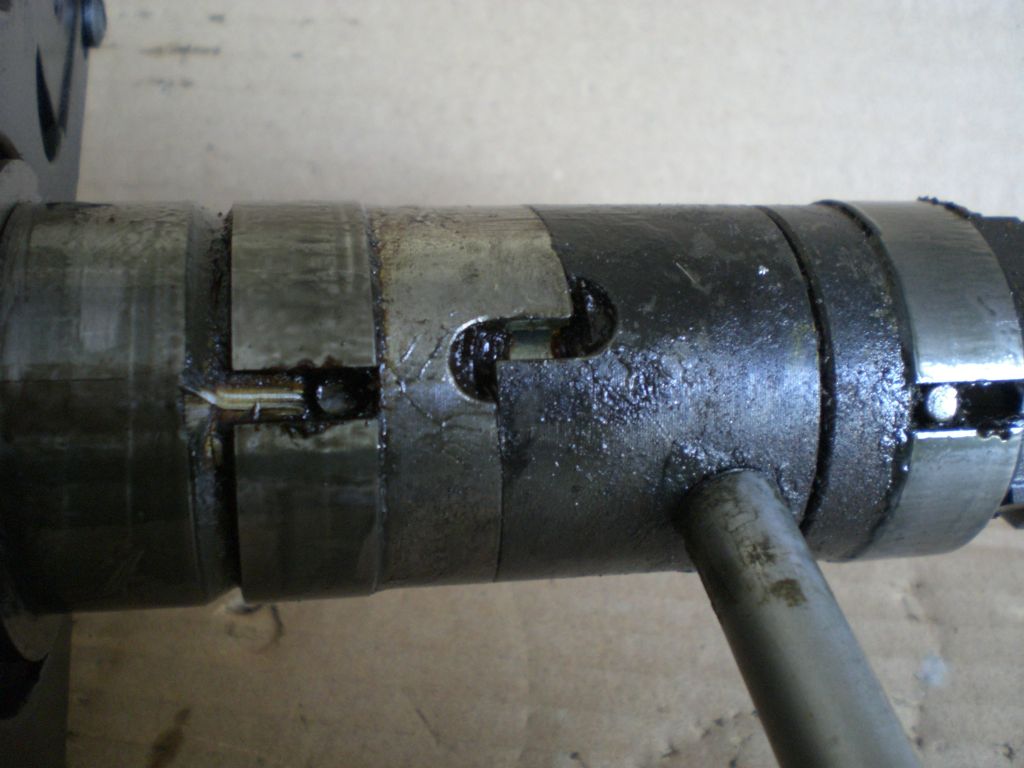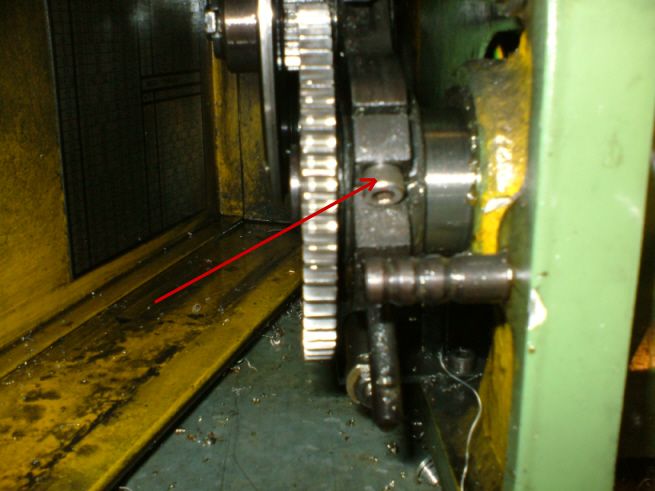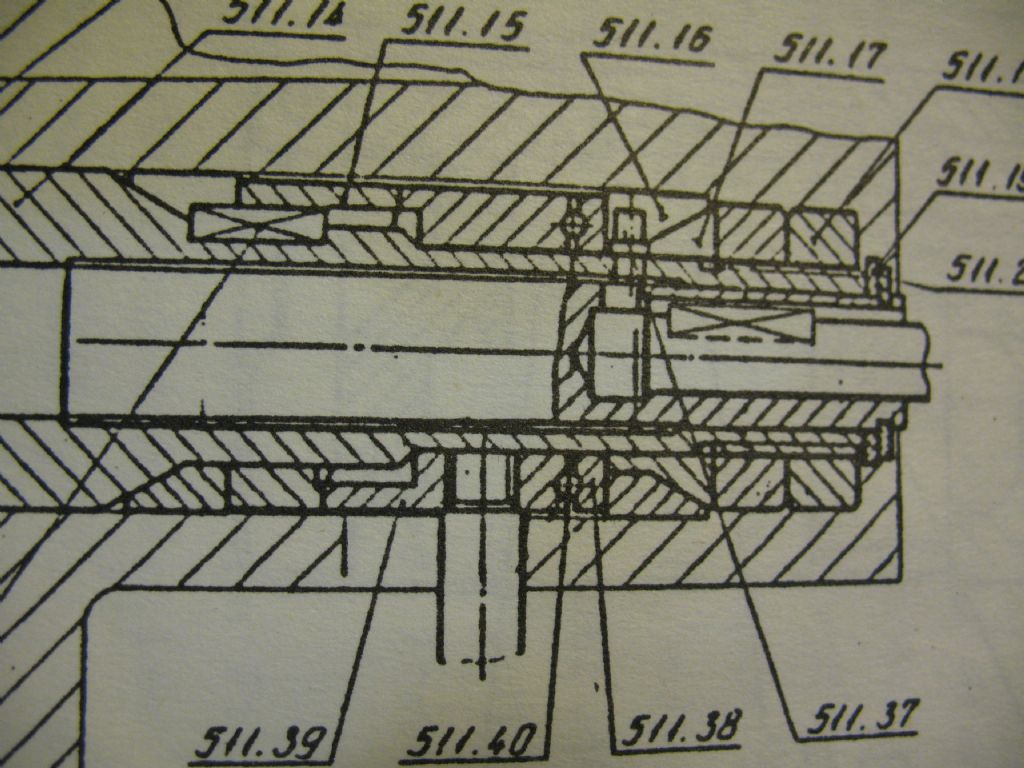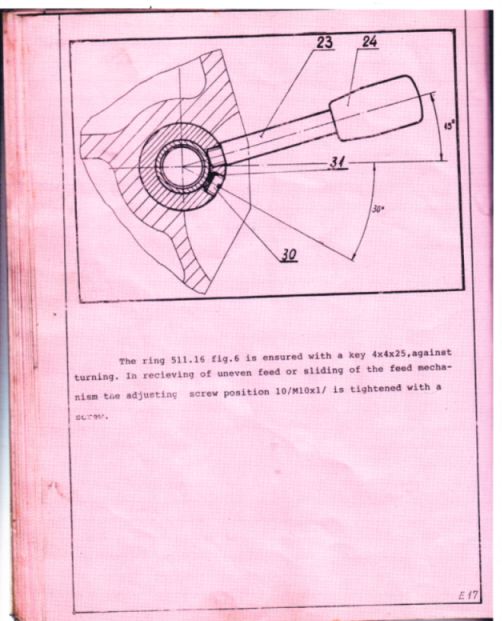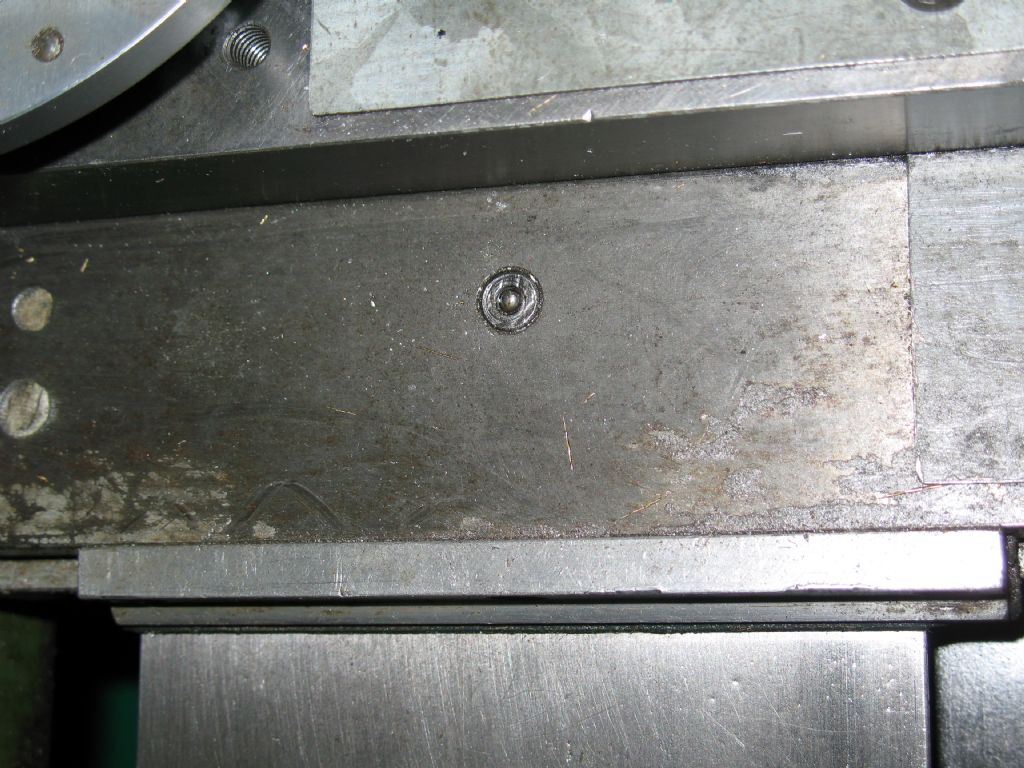Continued from above.
Last bit – how to get it out in one piece. Obviously this only applies to my style of lathe. If yours is different, then this may not work. Ok, here goes.
First stick your fingers onto the leadscrew, ie under the leadscrew guard. Rotate the leadscrew using the handwheel until you can feel the longitudinal slot in the leadscrew. Now turn the leadscrew using the handwheel until the slot is at the top. (If you do not, then there is a chance you will drop the key out, but do not worry, there is an easy work around that one. How do I know? Don’t ask !!!) Now remove the handle – it is just a normal right hand thread – having made sure that it is in its uppermost position. Once it is removed, open the gearbox cover and pull out whatever is there, (gears if screwcutting, or turning wheels) along with the mechanism. Having got it out, look down the righthand end and you should see the sliding keyway I mentioned above. Look through the big hole on the headstock casting, and with luck you should see the end of the leadscrew with the key still located and uppermost. To reassemble, insert the mechanism ensuring that the sliding keyway is at the top and simply feel it into engagement with the leadscrew. Easy-peasy.
Well, I think it is easy, but then I have had it out a number of times.
It might be difficult if anything such as the large disk starts catching on say the pulleys, or the spring loaded thingy middle front decides to be awkward. Or even if the expandable spring rings are expanded too much. But I did not have any trouble at all.
Ok, you’ve rotated the leadscrew down and the key has dropped out. Now I have small short fingers and although I can get them in, they are not long enough or thin enough to replace the key. So, here is what to do. At the other end of the leadscrew, undo and remove the adjuster, two screws to slacken, then screw it off. Remove, leave in place, whatever, the thrust bearing – it will most probably drop off whatever you do. Now slide the leadscrew, saddle and everything else towards the left until the end of the leadscrew becomes visible. Now you can replace the key. I actually found that I could replace the key through the gap where the handle fits. Carefully rotate the leadscrew so that the keyway plus key are at the top, slide the whole job lot back to the right, replace the thrust bearing (you did take note of the order of the parts didn’t you), replace the adjuster, adjust as necessary, lock up and Bob’s your Uncle. It might actually be a good idea to replace the mechanism before adjusting, not because it will have any effect on the adjustment, but more to prevent the key dropping ut if you accidently rotate the leadscrew again.
Ok folks, that’s all! Any problems? No? Good!
Regards,
Peter G. Shaw
Edited By Peter G. Shaw on 10/02/2012 19:35:36
Edited By Peter G. Shaw on 10/02/2012 20:03:47
Tim Hyndman.


